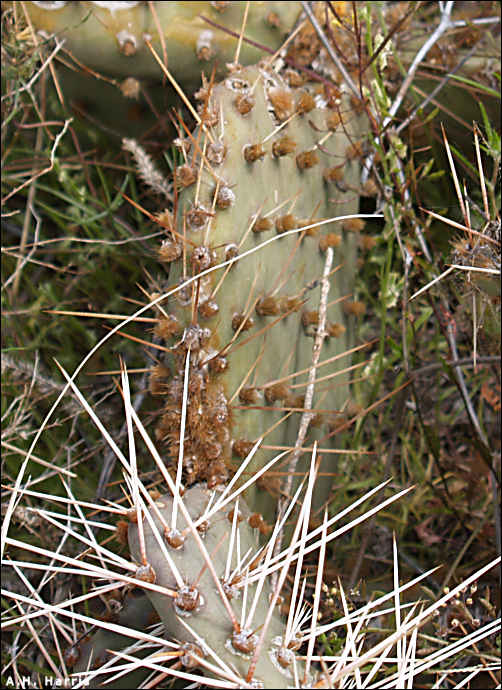

You've heard that it's not the big things that get you, it's the small stuff. With cacti, though, it's both the big and the small things that get you. Everyone knows about the long spines of a cactus. Just looking at them gives many people the willies. Yet, perhaps because they're noticeable and thus avoidable, they often do little real damage.
If glochid is a new word for you, you'd do well to integrate it
into your vocabulary if you wander around the desert much. Glochids are those tiny
spines that form clusters on cactus pads. Since they look like short stiff hairs, you
might be inclined to discount them. Don't do it! Merely brushing against them
usually is enough to embed them in the skin. Now that may not sound too bad, since
they're so small, but what's not apparent with the naked eye is that each
glochid is loaded with a bunch of backwards-pointing barbs. Trying to pull them out
brings home a nasty insight—just as surely as any whale, you've been
harpooned!

Contributor: Arthur H. Harris, Laboratory for Environmental Biology, Centennial Museum, University of Texas at El Paso.
Desert Diary is a joint production of the Centennial Museum and KTEP National Public Radio at the University of Texas at El Paso.

Prickly Pear pads showing glochids. Each of the brownish tufts consists of dozens of glochids. Photograph by A.H. Harris.